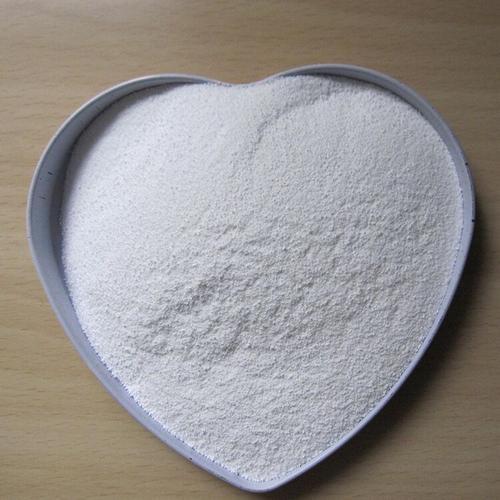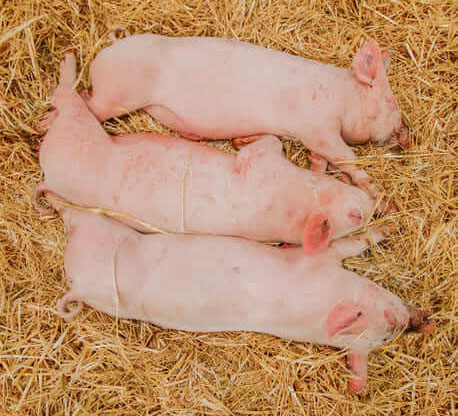Basic characteristics of zinc oxide:
◆ Physical and chemical properties
Zinc oxide, as an oxide of zinc, exhibits amphoteric alkaline properties. It is difficult to dissolve in water, but can easily dissolve in acids and strong bases. Its molecular weight is 81.41 and its melting point is as high as 1975 ℃. At room temperature, zinc oxide typically appears as hexagonal crystals, odorless and tasteless, and has stable properties. In the field of feed, we mainly utilize its convergence, adsorption, and antibacterial properties. Adding it to the feed of piglets can not only improve their growth performance, but also effectively prevent their diarrhea problems.
◆ Working principle and pathway
High doses of zinc oxide have been widely proven to improve piglet growth performance and prevent diarrhea. The principle of its action is mainly attributed to the molecular state of zinc oxide (ZnO), rather than other forms of zinc. This active ingredient can effectively promote the growth of piglets and significantly reduce the incidence of diarrhea. Zinc oxide promotes piglet growth and intestinal health through its molecular state ZnO. High doses of ZnO neutralize and converge gastric acid in the stomach and small intestine, and absorb harmful bacteria, improving growth performance.
In the acidic environment of the stomach, zinc oxide undergoesacid-base neutralization reaction with gastric acid, and the reaction equation is: ZnO+2H+→ Zn ² ⁺+H ₂ O. This means that every mole of zinc oxide consumes two moles of hydrogen ions. If 2kg/t of regular zinc oxide is added to the educational feed for piglets, and assuming that weaned piglets have a daily feed intake of 200g, they will consume 0.4g of zinc oxide per day, which is 0.005 moles of zinc oxide. In this way, 0.01 moles of hydrogen ions will be consumed, which is approximately equivalent to 100 milliliters of stomach acid with a pH of 1. In other words, this portion of zinc oxide (about 70-80%) that reacts with stomach acid will consume 70-80 milliliters of pH 1 stomach acid, which accounts for almost 80% of the total daily secretion of stomach acid in weaned piglets. Such consumption will undoubtedly have a serious impact on the digestion of protein and other nutrients in feed.
The risk of high-dose zinc oxide:
During the weaning stage of piglets, the required amount of zinc is approximately 100-120mg/kg. However, excessive Zn ²+can compete with surface transporters of intestinal mucosal cells, thereby inhibiting the absorption of other trace elements such as copper and iron. This competitive inhibition disrupts the balance of trace elements in the intestine, leading to obstruction of the absorption of other nutrients. Research has shown that high doses of zinc oxide significantly reduce the absorption of iron elements in the intestine, thereby affecting the formation and synthesis of hemoglobin. At the same time, high-dose zinc oxide can also cause excessive production of metallothionein, which preferentially binds to copper ions, leading to copper deficiency. In addition, a significant increase in zinc levels in the liver and kidneys may also cause problems such as anemia, pale skin, and rough hair.
◆ Effects on gastric acid and protein digestion
Zinc oxide, as a slightly alkaline substance, has an acidity value of 1193.5, second only to stone powder (acidity value of 1523.5), and belongs to a relatively high level in feed raw materials. High doses of zinc oxide consume a large amount of stomach acid, hinder protein digestion, and affect the digestion and absorption of other nutrients. Such consumption will undoubtedly have a serious impact on the digestion of protein and other nutrients in feed.
◆ Obstacles to the absorption of other nutrients
Excessive Zn ²+competes with nutrient absorption, affecting the absorption of trace elements such as iron and copper, thereby affecting hemoglobin synthesis and causing health problems such as anemia.
◆ Apoptosis of intestinal mucosal cells
Research has revealed that excessive concentration of Zn ²+in intestinal mucosal cells can lead to cell apoptosis and disrupt the stable state of intestinal cells. This not only affects the normal activity of zinc containing enzymes and transcription factors, but also exacerbates cell death, leading to intestinal health problems.
◆ Environmental impact of zinc ions
Zinc ions that are not fully absorbed by the intestine will eventually be excreted with feces. This process leads to a significant increase in the concentration of zinc in feces, resulting in a large amount of unabsorbed zinc ions being discharged, causing environmental pollution. This large amount of zinc ion discharge may not only cause soil compaction, but also lead to environmental problems such as heavy metal pollution in groundwater.
Protective zinc oxide and product advantages:
◆ The positive effects of protective zinc oxide
The development of protective zinc oxide products aims to fully utilize the anti diarrheal effect of zinc oxide. Through special protective processes, more molecular zinc oxide can reach the intestine, thereby exerting its anti diarrheal effect and improving the overall utilization efficiency of zinc oxide. This low-dose addition method can achieve the anti diarrheal effect of high-dose zinc oxide. In addition, this process can also reduce the reaction between zinc oxide and stomach acid, reduce the consumption of H+, avoid excessive production of Zn ²+, thereby improving the digestion and utilization rate of protein, promoting the growth performance of piglets, and improving their fur condition. Further animal experiments have confirmed that protective zinc oxide can indeed reduce gastric acid consumption in piglets, improve digestion of nutrients such as dry matter, nitrogen, energy, etc., and significantly increase daily weight gain and meat to feed ratio of piglets.
◆ The product value and advantages of zinc oxide:
Improve feed digestibility and utilization, thereby promoting the improvement of production performance; At the same time, it effectively reduces the incidence of diarrhea and protects intestinal health.
For the later growth of piglets, this product can significantly improve their growth and solve problems such as pale skin and rough hair.
The unique low addition design not only reduces the risk of excessive zinc, but also minimizes the potential pollution of high zinc emissions to the environment.
Post time: Sep-04-2025







